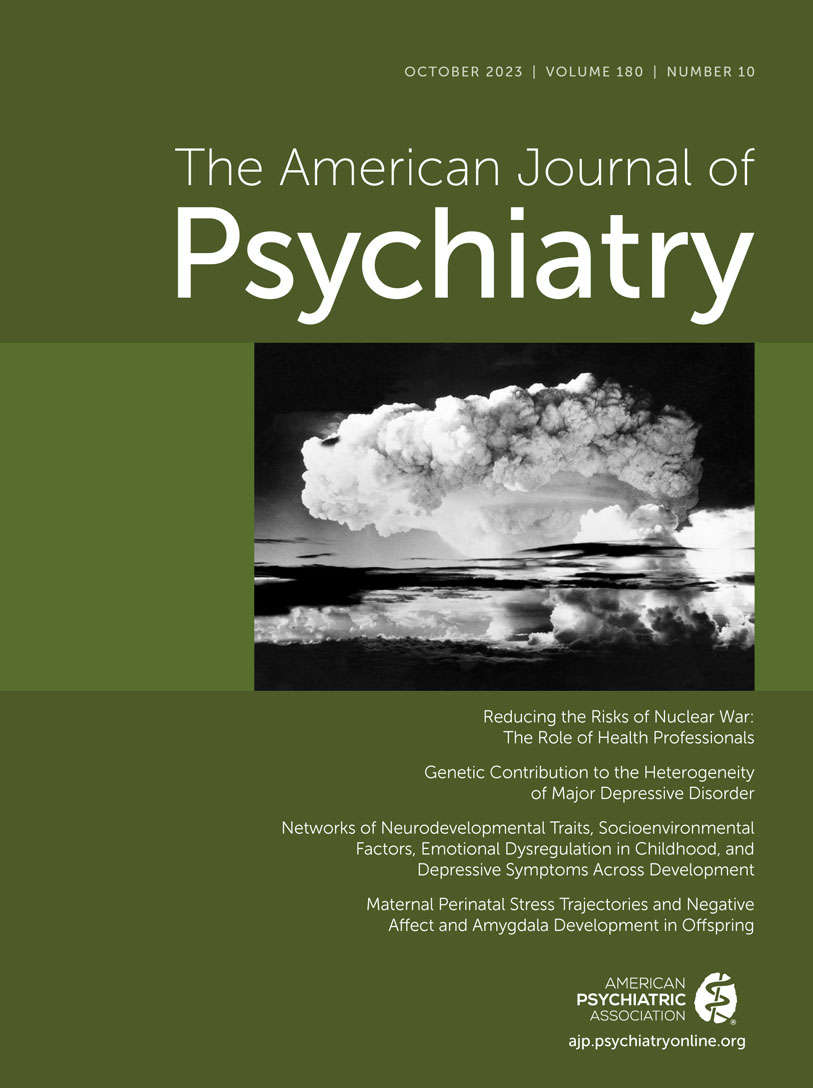Genetic Contribution to the Heterogeneity of Major Depressive Disorder: Evidence From a Sibling-Based Design Using Swedish National Registers
Abstract
Objective:
Major depressive disorder (MDD) is highly heterogeneous. Standard typology partly captures the disorder’s symptomatic heterogeneity, although whether it adequately captures etiological heterogeneity remains elusive. The aim of this study was to investigate the genetic characterization of MDD heterogeneity.
Methods:
Using Swedish patient register data on 1.5 million individuals, the authors identified 46,255 individuals with specialist-diagnosed MDD. Eighteen subgroups were identified based on nine comparison groups defined by clinical and psychosocial features, including severity, recurrence, comorbidities, suicidality, impairment, disability, care unit, and age at diagnosis. A sibling-based design and classic quantitative genetic models were applied to estimate heritability of MDD subgroups and genetic correlations between subgroups.
Results:
Estimates of heritability ranged from 30.5% to 58.3% across subgroups. The disabled and youth-onset subgroups showed significantly higher heritability (55.1%–58.3%) than the overall MDD sample (45.3%, 95% CI=43.0–47.5), and the subgroups with single-episode MDD and without psychiatric comorbidity showed significantly lower estimates (30.5%–34.4%). Estimates of genetic correlations between the subgroups within comparison groups ranged from 0.33 to 0.90. Seven of nine genetic correlations were significantly smaller than 1, suggesting differences in underlying genetic architecture. These results were largely consistent with previous work using genomic data.
Conclusions:
The findings of differential heritability and partially distinct genetic components in subgroups provide important insights into the genetic heterogeneity of MDD and a deeper etiological understanding of MDD clinical subgroups.
Access content
To read the fulltext, please use one of the options below to sign in or purchase access.- Personal login
- Institutional Login
- Sign in via OpenAthens
- Register for access
-
Please login/register if you wish to pair your device and check access availability.
Not a subscriber?
PsychiatryOnline subscription options offer access to the DSM-5 library, books, journals, CME, and patient resources. This all-in-one virtual library provides psychiatrists and mental health professionals with key resources for diagnosis, treatment, research, and professional development.
Need more help? PsychiatryOnline Customer Service may be reached by emailing [email protected] or by calling 800-368-5777 (in the U.S.) or 703-907-7322 (outside the U.S.).



